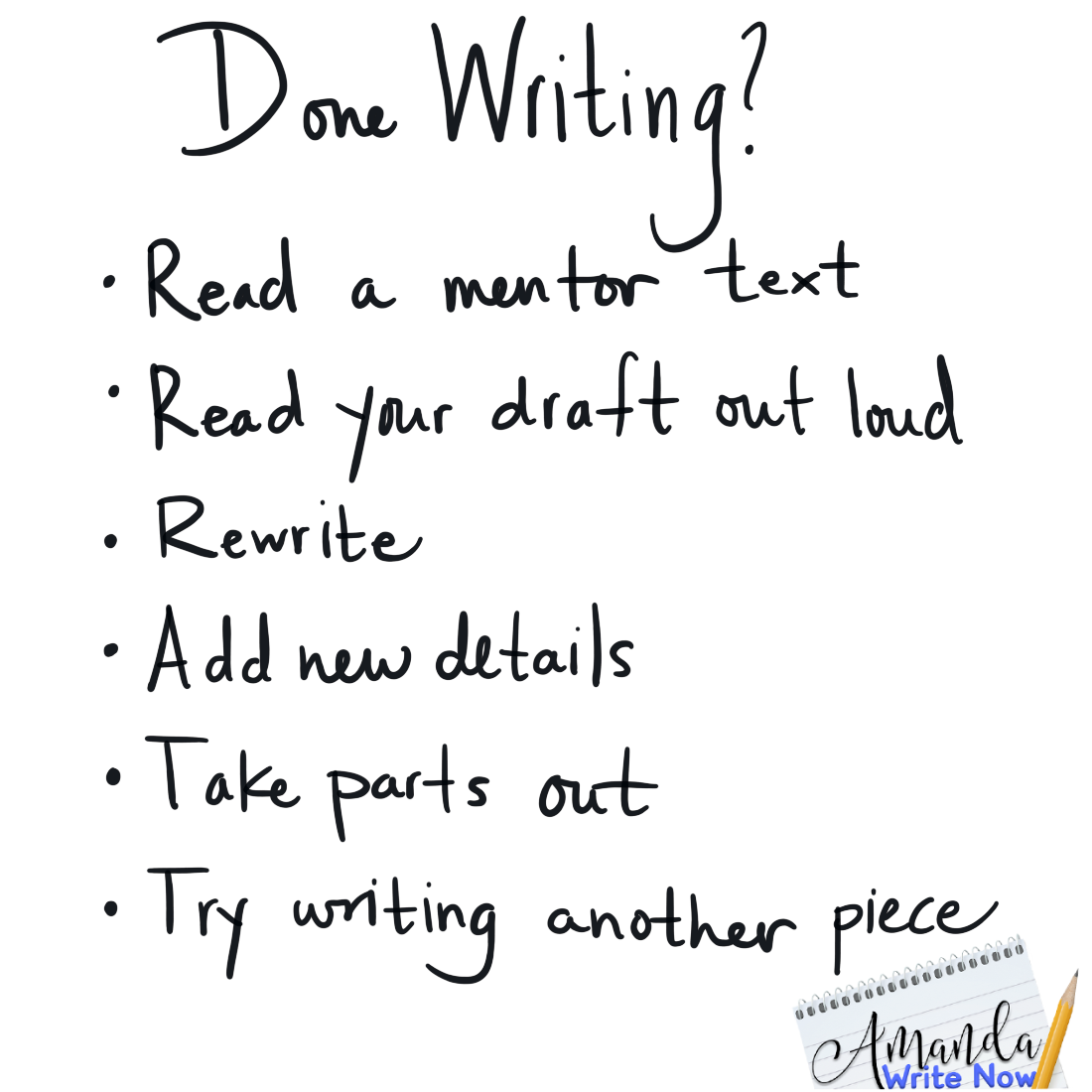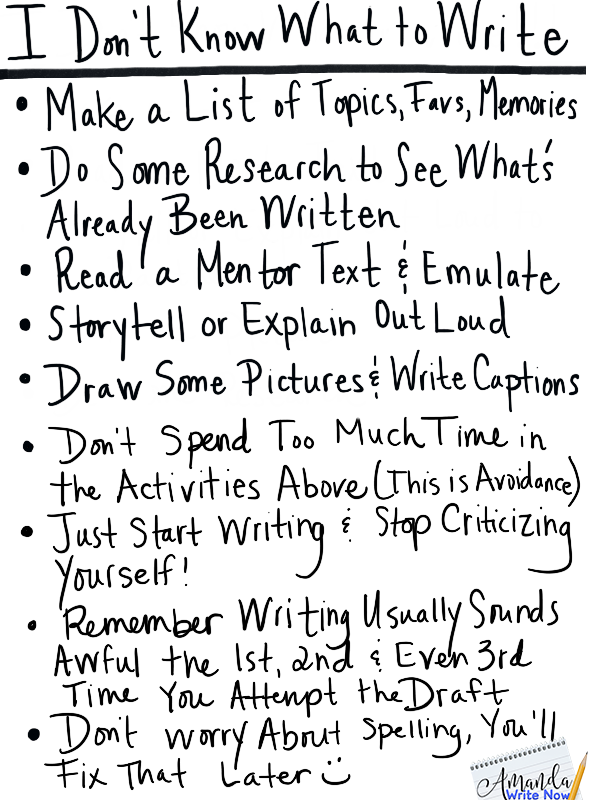
Teaching writing can be overwhelming to the max! The variety of writing skills students need to master and the multifaceted competencies and struggles our students exhibit can make your head spin! I’m not a fan of labeling students but over the course of twelve years of teaching writing there are some common characteristics I’ve come to find among students in my classes every year. Below is a list of these groups of students and strategies for supporting them…
Fast Finishers
Many students who say they are done just need a break away from their piece for a bit. You can choose to give them opportunities to take a break and just read or draw a picture of a story idea. You can also use a chart that allows students to choose from a list of activities to do when they think they are done.

Special Needs Writers
These students need opportunities to feel confident and competent! Praise, praise and praise some more. Assign them specific tasks that are easy to manage during writing and build their confidence.
- Tell one student to draw you a picture of something involving their topic and write a paragraph about the picture.
- Have another student go around with a clipboard putting stars next to names of students who are focused on writing and those that are distracted (best used with younger students).
- You could also choose students to be charge of listening to peer conferences and typing/writing what they hear.
- Have students talk aloud as you write their ideas.
- Another great tool is Google Voice Typing and giving students opportunities to type their work. Students often become much more motivated when they get to use technology.
- Special Ed students greatly benefit from sentence stems too. Before a mini lesson think of what sentence stems you will provide them with. For example if one of your sped students is writing an informational book on birds, quickly jot the following stems for them to use during writing: Birds are… Birds live…Birds eat…I love birds because…My favorite bird is…
Sloppy Writers
These students need to be praised for all that they have written.
- Have them reread what they wrote to you and ask them what they notice (hopefully they notice they can’t read their own writing very well). Explain that most of being a writer is rereading what you wrote and if the writing is so sloppy you can’t make out what it says you won’t be able to do this.
- One trick for younger writers is to write in highlighter as they tell you their ideas. Then when you have written a whole page or half a page, depending on the student, have them go back, read and trace the highlighted words.
- Have this student practice writing slower and constantly check up on them to see how they are doing with their handwriting goals. Praise them for how nice their writing is looking lately.
- You could also skip all the above advice and just let them type!
Unmotivated Writers
Closely observe these students, what do they like to do at recess, what books do they choose at the library, what do they talk about with other classmates. Ask them questions about what they did over the weekend, at recess or last summer. Let them know you’ve noticed they are interested in____________. Ask them to tell you about these topics and listen with undivided attention. Exclaim that they should publish a book about this topic/experience! You may even write some sentence starters in their journal based on what they said.
Using Google Voice Typing, laptop or computer to work on their story will also be a sure way to get the unmotivated moving. Sometimes students who are unmotivated give lots of excuses about not having any ideas to write about. Here is a chart that might help:

Overachieving Writers
Some students will surpass others in their writing work and you will wish they would just slow down because you aren’t ready, you’ll think, “I haven’t gotten to that lesson yet!” My advice is just go for it, briefly tell the student the next step. Usually a quick mini lesson with these students will get them off and running. Also, the work these students produce could be the work sample you need for the upcoming mini lesson.
Final Thoughts…
One of the best ways to meet each of your student’s needs is by taking the time to get to know them. The more comfortable they are with you, the more they know you won’t judge their inadequacies as writers, the safer they feel with you, the better able you can support them! Here are some other related articles that can help you in your efforts to meet your students’ needs:
5 Simple Ways to Differentiate Writing Instruction
My Students Don’t Write During Writing

Hi Amanda! Your scope on teaching all writers was a gold mine! I’ve watched it twice and will use this blogpost to guide me in my own classroom. Writing is the most difficult thing for me to teach. I always put writing on the back-burner (and stress because it’s incredibly important). Many times I don’t know where to start (and I’m a seasoned teacher–20 years in this gig)! So thanks a million. Keep up the great work!
Marlene (aka mermarios, MarMerRios) #THM
Wow thanks for the wonderful feedback! You made my day Marlene:) Hope to provide much more through iteachtvnetwork.com every Thursday at 4 PST on Periscope! Hope to see you there.